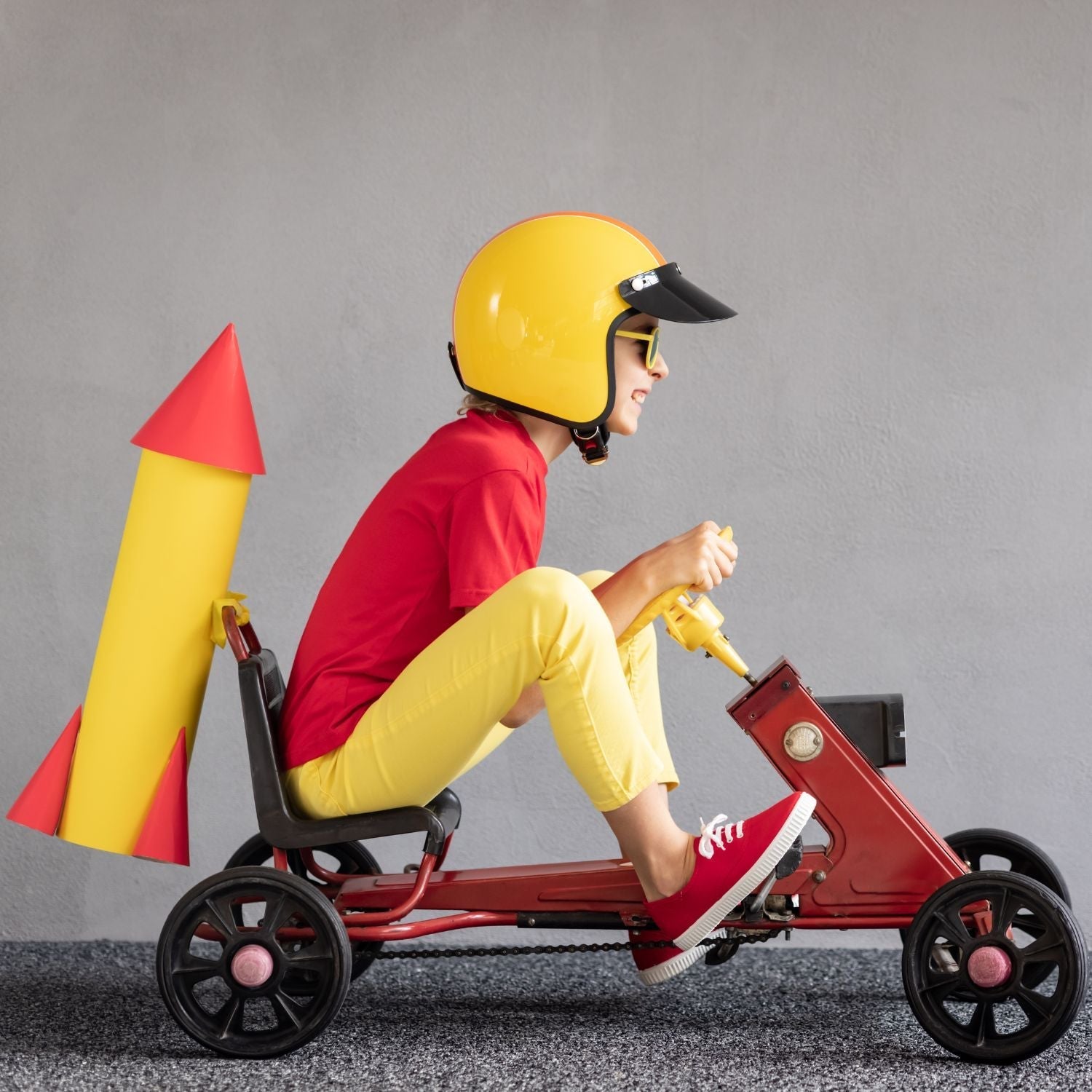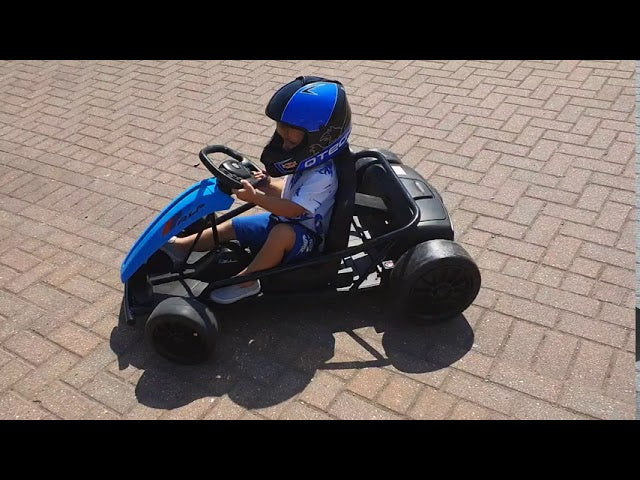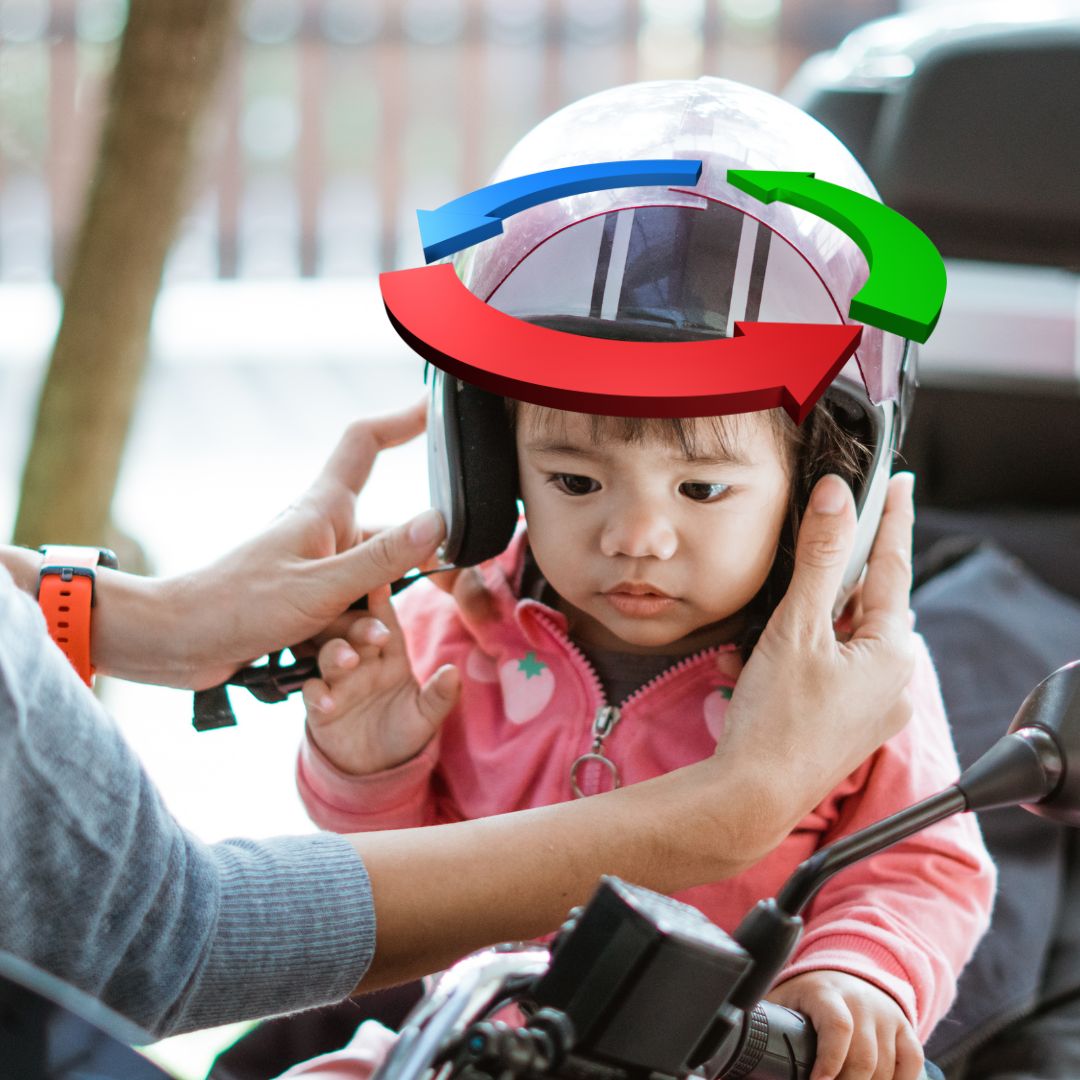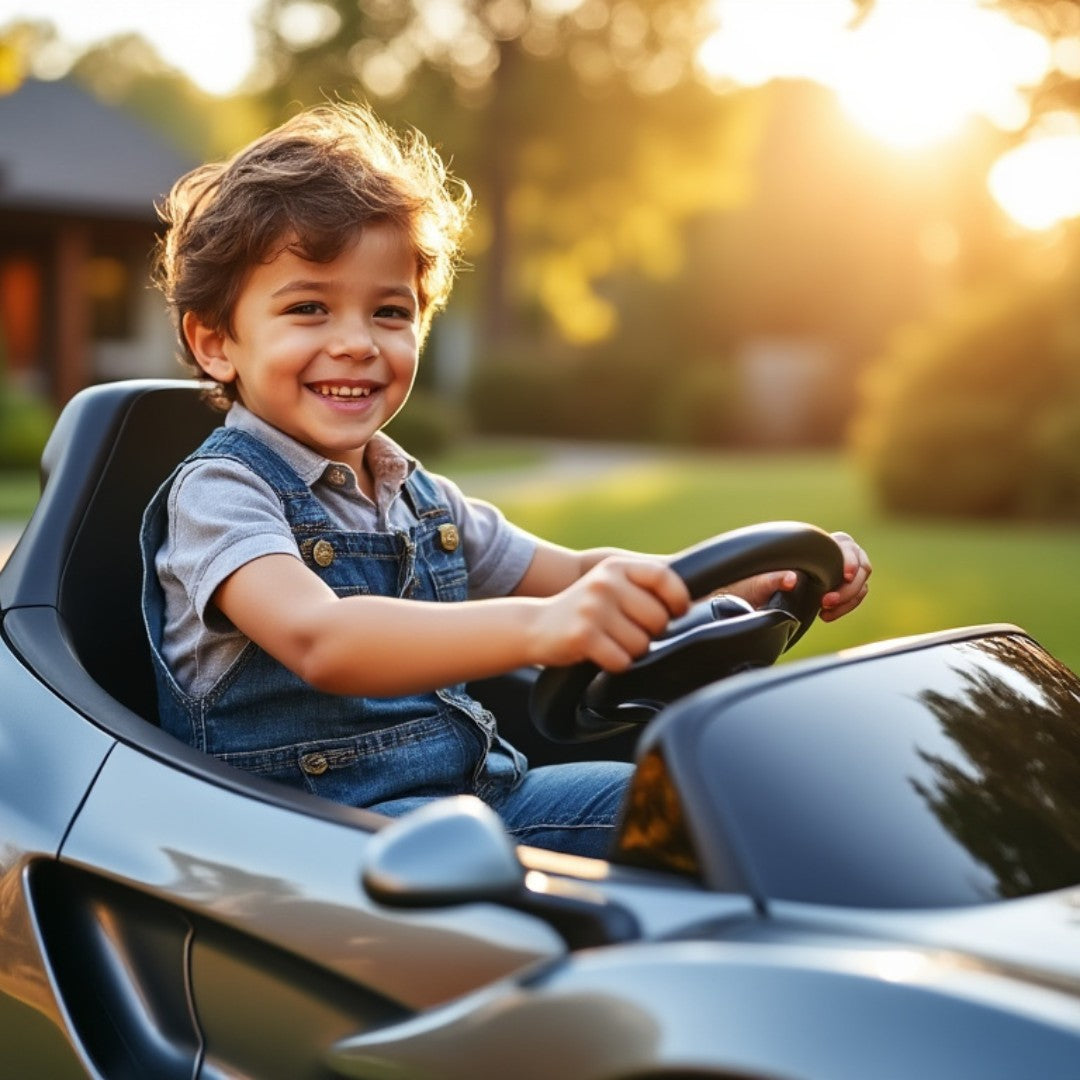
Updated: 14.05.25
Ever noticed how kids’ eyes light up at the sight of a ride-on toy?
These miniature vehicles are more than just a fun pastime—they're a big part of growing up today.
But with great fun comes great responsibility, especially when it comes to speed settings.
Understanding these can make all the difference in ensuring your child’s safety and enjoyment.
This article dives into what low and high speeds really mean on kids' ride-ons—and why choosing the right one is more important than you might think.
1. Speed Definitions
Low and high speeds might sound simple, but there's more to them than just numbers:
Low Speed (2–3 mph): Perfect for little drivers just starting out—safe, steady, and great for learning.
High Speed (4–6 mph): Ideal for older, more confident kids who want a bit more excitement.
Examples of Speed in Action
Low speed moves just a bit faster than a brisk walk—great for indoors or small outdoor areas.
High speed matches a gentle jog—better for wide open spaces like parks or larger gardens.
2. Age and Developmental Considerations
Low Speed (Ages 2–4): Young children are still developing coordination—slower speeds help them learn safely.
High Speed (Ages 5–8): Older kids often crave more speed and are better equipped to handle it safely.
Tips for Assessing Child’s Readiness
Ready to level up? Look for signs like independent steering, confident turning, and consistent stopping ability.
3. Safety Factors
Safety should always come first, regardless of speed.
Low Speed: Lower speeds reduce the risk of tipping or collision—perfect for beginners.
High Speed: Always supervise play, use helmets, and ensure the riding area is safe and obstacle-free.
Common Safety Mistakes to Avoid
Never use high speeds in tight or indoor spaces. Always match speed to your child’s skill level and environment.
4. Terrain and Environment
Low Speed: Ideal for flat surfaces like indoor floors, driveways, and sidewalks.
High Speed: Suited for grassy yards or areas with gentle slopes—still check for obstacles!
Best Practices for Different Terrains
Match speed to surface. Always inspect the area for hazards before higher-speed play.
5. Battery Life and Charging
Low Speed: Often uses 6V or 12V batteries—lighter and quicker to recharge.
High Speed: Needs 24V or 36V batteries—longer run times, but also longer charge times.
Tips for Extending Battery Life
- Charge regularly, even if not in use.
- Avoid full discharges.
- Store in a cool, dry place.
- Maintain tyres and mechanical parts.
6. Child’s Skill Level and Preferences
Low Speed: Great for cautious beginners.
High Speed: Ideal for experienced riders seeking adventure.
Adjusting Speed as Skills Improve
As your child gains confidence, gradually increase speed to match their progress and keep play engaging.
7. Upgradability and Modifications
Some ride-ons can be upgraded for higher speeds—just follow manufacturer guidelines and prioritize safety.
8. Choosing the Right Model
Select models with adjustable speeds, age-appropriate design, and strong safety reviews to grow with your child.
Conclusion
From a casual indoor cruise to outdoor races, matching speed to age, skill, and terrain ensures a safer and more fun experience.
Pay attention to how your child rides, where they ride, and how they react—these cues will guide you to the ideal speed setting.
Frequently Asked Questions
What is the best speed for a toddler’s ride-on toy?
2–3 mph is ideal for toddlers—it offers safe, manageable speed for developing coordination.
Is 6 mph too fast for kids?
6 mph is suitable for older children (5–8 years) with better control and supervision.
Can I upgrade a low-speed ride-on to high speed?
Yes, but only with compatible parts and by following safety guidelines.
Does high speed drain the battery faster?
Yes. Higher speeds use more power and will reduce runtime between charges.
Are adjustable speed settings better?
Yes. They offer flexibility and allow the toy to grow with your child’s skills.
Get in Touch 🚀
Loved our article on “Here's The Difference Between Low/High Speed on Your Kids Ride On”? Got the itch to dive into more wheely-awesome info?
Whether you're a parent or a grandparent, we're here for all your kids ride-on toy questions! 🚗💨
Feeling click-happy?
Jump straight into our wonderland at RiiRoo.com.
Or, if you're more the chatty type, give our Live Chat a whirl and let's talk toys!










Share:
Here's How To Recycle Your Kids Ride On Toys
Beginner's Guide to Repairing Your Kid's Electric Ride-On Toy